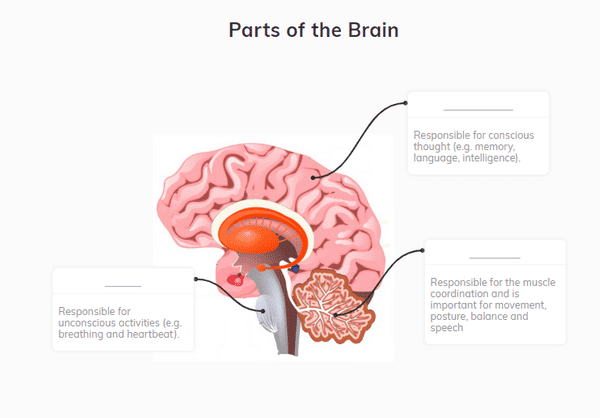

Using Images to Accelerate Learning
You’ve probably heard that an image is worth a thousand words, right? But is that also true for learning? Can we use images to boost students’ performance? According to Science, yes we can!
The Dual Code Theory (1) suggests that it is much easier to understand – and remember – something when this information combines verbal and non-verbal elements. For example, imagine you are teaching Biology GCSE content and today’s lesson is about parts of the brain. You can write down a long paragraph onboard, like this:
Or you can simply write down the key information and connect them with lines, like this:
Which one do you think is easier for the students to understand? Which one is easier for them to use as notes when searching for information? Which one is easier to be remembered in an exam? Controlled research studies clearly show that including pictorial elements to studying significantly increases performance (2).
Another interesting way of using images to improve performance in exams is to link a piece of learned knowledge to a location; a technique commonly known as the Memory Palace. This technique works because the more similar our learning environment is to our testing environment, the easier it is to recall information. But that also works if the environments are simply in your head (3)! For example, you can store the features of a nerve cell in Cambridge and the features of a muscle cell in New York. During the exam, it should be easier to remember the features of each type of cell by thinking back to the two cities.
Seneca’s Accelerated Learning System is flooded with images. Our platform uses diagrams, mind maps, colour-coded equations, photographs, GIFs and even videos to facilitate understanding and double students’ performance. And we even included a memory palace! After completing a lesson, students can store that memory in beautiful locations around the world. They can also revisit the locations and explore their knowledge, creating stronger links between the information and its location in the mind palace.
Try Seneca’s evidence-informed learning system today and make sure your students join the 3.5 million users who are learning 2x faster!
References
- Clark, J. M., & Paivio, A. (1991). Dual coding theory and education. Educational psychology review, 3(3), 149-210.
- Bramao, I., Karlsson, A., & Johansson, M. (2017). Mental reinstatement of encoding context improves episodic remembering. Cerebral Cortex, 94, 15-26.
- Meyer, E. M., & Anderson, R, B. (1991) Animations need narrations: an experimental test of a dual-coding hypothesis. Journal of Educational Psychology, 83, 4, 484-490.









